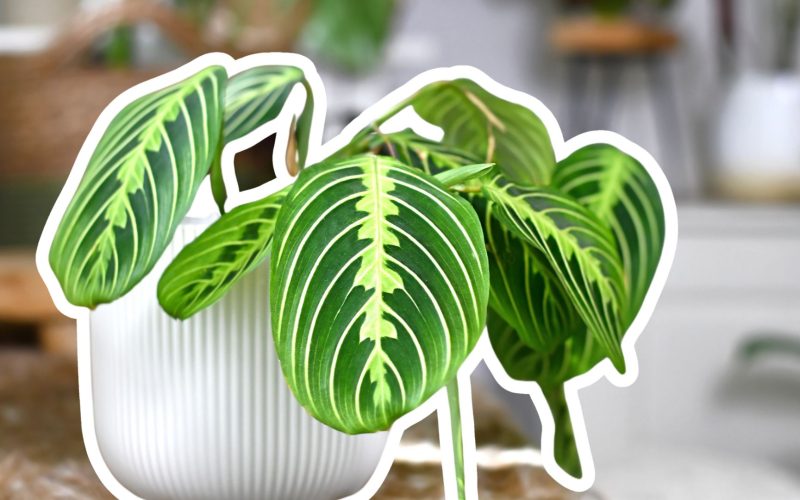Growing houseplants can be tricky, especially when it comes to unique varieties like the lemon-lime maranta.
With its eye-catching green leaves, this plant often leaves plant lovers scratching their heads. But there’s no need to worry!
This guide will help you become a pro at caring for this beautiful plant. It offers tips and tricks for keeping your lemon-lime maranta happy and healthy.
The guide covers everything from light and water needs to soil preferences and common issues. By the end, you’ll have all the knowledge to help your maranta thrive.
Let’s uncover the secrets to successful lemon lime maranta care!
Interesting Beauty of Lemon Lime Maranta
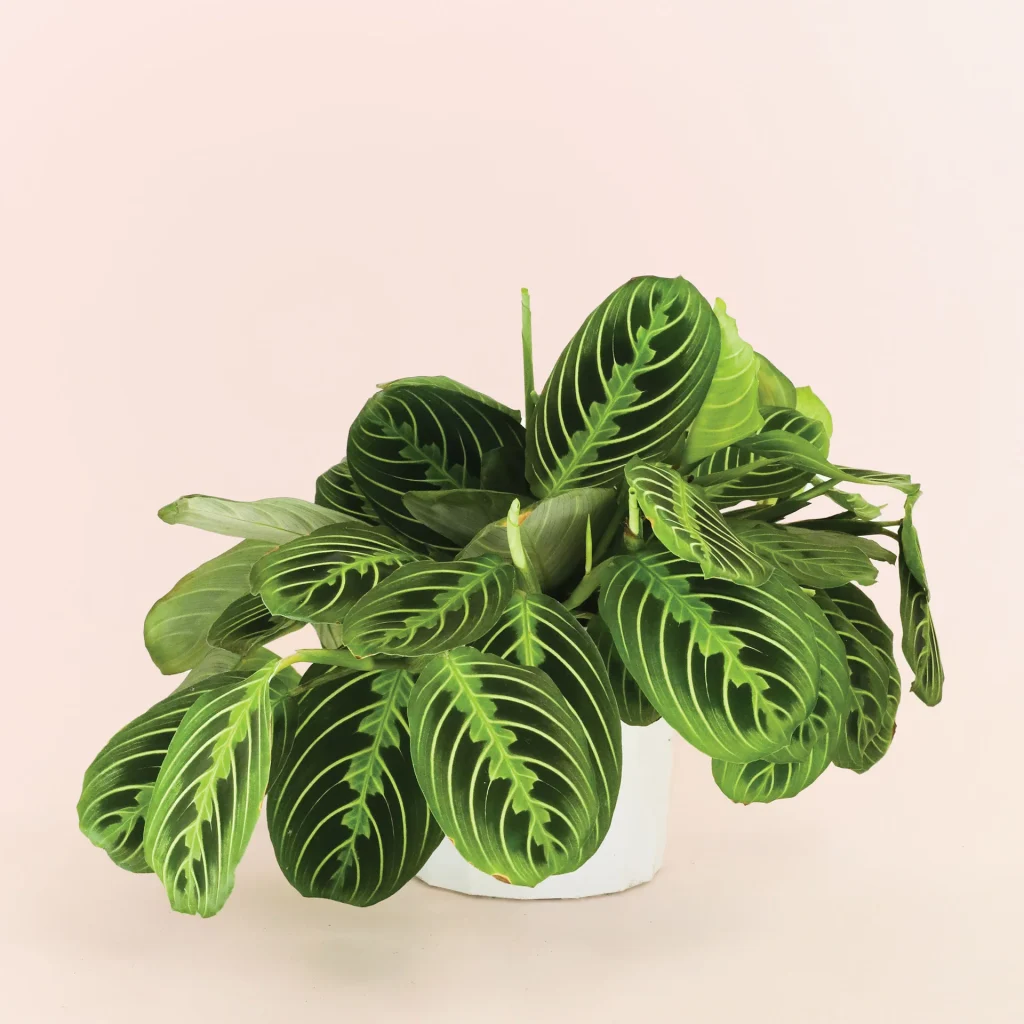
The lemon-lime maranta stands out with its bright green markings that seem almost painted on. This plant’s leaves are a true work of nature’s art.
Each leaf shows off a light and dark green pattern that catches the eye. But the real magic happens at night.
As the sun sets, the leaves fold up like hands in prayer, giving this plant its nickname “prayer plant.” This daily movement adds a touch of wonder to any room.
Keeping a lemon-lime maranta happy isn’t just about looks. Good care helps the plant stay strong and healthy.
When well-cared for, this plant grows fuller and more vibrant. It may even reward you with tiny, delicate flowers.
On the flip side, a neglected maranta can quickly lose its charm. Leaves may droop, colors may fade, and growth may slow.
Learning the right care tips can help your maranta flourish and bring long-lasting beauty to your home.
| Botanical Name | Maranta leuconeura ‘Lemon Lime’ |
| Common Name | Lemon Lime Maranta, Lemon Lime Prayer Plant |
| Plant Type | Herbaceous, perennial |
| Family | Marantaceae |
| Mature Size | 6–12 in. tall, 6–12 in. wide |
| Native Area | South America |
Basic Care Requirements for The Plant
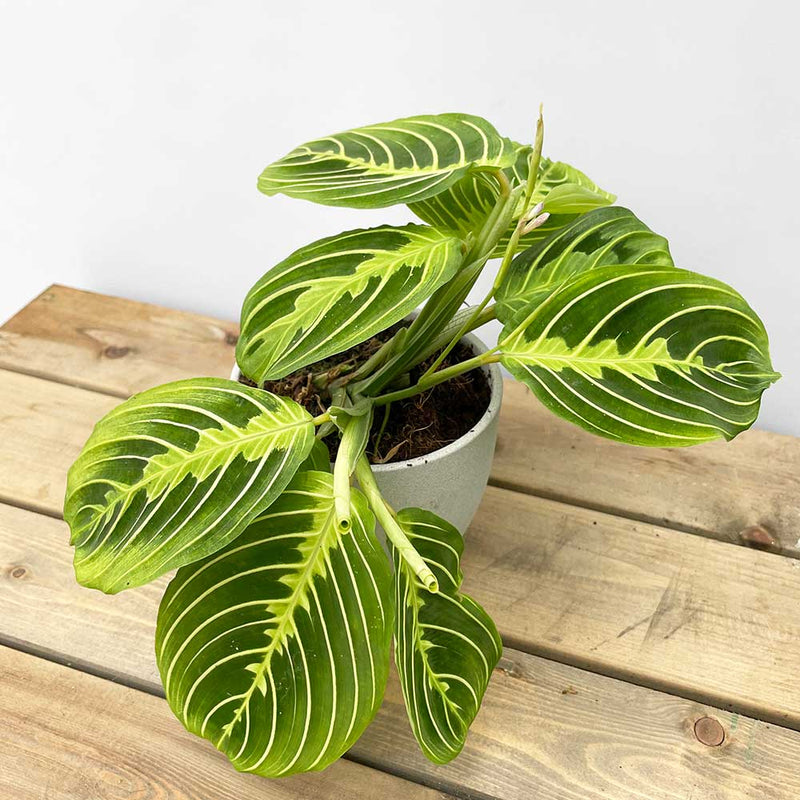
Caring for a lemon-lime maranta doesn’t have to be complicated. However, by understanding its basic needs, you can keep your plant healthy and thriving.
Let’s explore the essential care requirements.
1. Light
Lemon lime maranta thrives in bright, indirect light. It’s best to keep it away from direct sunlight, which can cause the leaves to curl up.
While this plant can handle low-light spots, it grows best with some indirect sun. A good place for your maranta might be near a north or east-facing window.
If you only have south or west windows, keep the plant a few feet back from the glass to avoid harsh rays.
2. Water
This plant likes its soil to stay moist but not waterlogged. Check the top inch of soil with your finger. When it feels dry, it’s time to water.
Use filtered or rainwater if you can. Tap water often has salts and minerals that can cause brown leaf tips over time.
Be careful not to overwater, as too much moisture can lead to root rot. It’s better to underwater slightly than to overwater.
3. Soil
Choose a well-draining soil mix for your lemon-lime maranta. A good mix might include regular potting soil with some perlite added.
This helps air reach the roots, which is key for plant health. Avoid using pure peat moss or heavy soils that hold too much water.
The plant prefers slightly acidic soil. To help with this, add a tablespoon of used coffee grounds to the soil once a month.
4. Temperature and Humidity
Your maranta will be happiest in temperatures between 60°F and 80°F. It also likes humid air, which mimics its natural jungle habitat.
If your home is dry, you might need to raise the humidity around the plant. You can do this with a pebble tray or a small humidifier nearby.
Just make sure there’s good airflow to prevent mold growth when humidity is high.
5. Fertilizer
During spring and summer, feed your plant with a balanced, organic fertilizer monthly. Use half the amount listed on the package to avoid overfeeding.
You can add worm castings to the soil for a natural nutrient boost. Some growers find that adding beneficial fungi, called mycorrhizae, to the soil helps the plant grow stronger.
These steps help your maranta stay healthy and grow lush, vibrant leaves.
Advanced Care Techniques
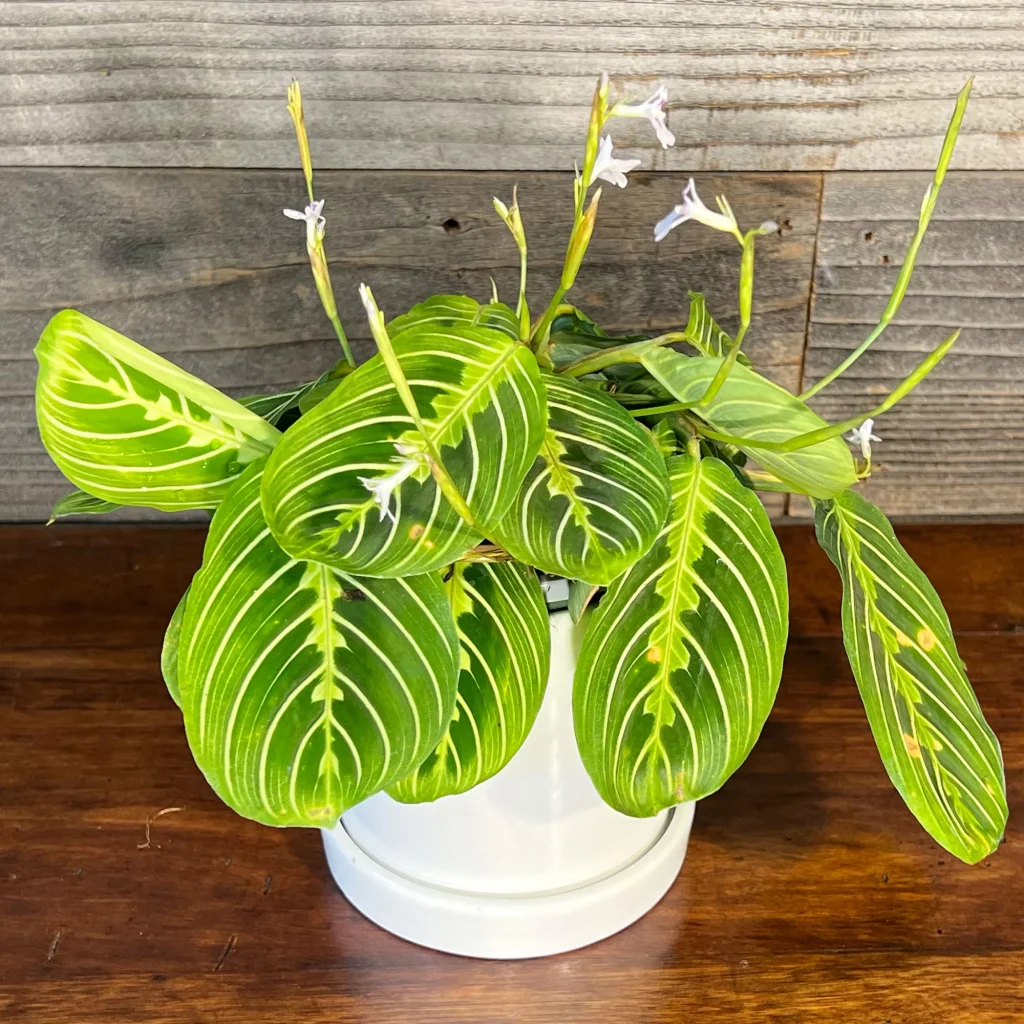
Advanced care techniques can take your lemon-lime maranta from surviving to thriving. These methods help maintain the plant’s beauty and health over time.
Let’s explore some key practices for expert-level maranta care.
1. Pruning
Pruning your lemon-lime maranta keeps it looking neat and encourages healthy growth. This simple task can greatly affect your plant’s appearance and vitality.
Let’s explore how to prune effectively.
• Cut off dead or damaged leaves to keep your plant neat.
• Trim long, leggy stems to encourage fuller growth.
• Use sharp scissors to cut just above a leaf node.
• You can prune any time of year, but spring is best for major trimming.
2. Propagation
Propagating your lemon-lime maranta is a fun way to grow your plant collection. It’s like giving your plant babies! This process is easier than you might think and can be very rewarding.
• Take stem cuttings that include at least one node (the bumpy part where leaves grow).
• Remove lower leaves, leaving 2-3 at the top.
• Place cuttings in a clear glass of water.
• Change the water every few days to keep it fresh.
• Wait for roots to grow about 2 inches long before planting in soil.
• Plant rooted cuttings in small pots with well-draining soil.
3. Repotting
Repotting gives your lemon-lime maranta room to grow and fresh nutrients. It’s an important part of long-term care that helps keep your plant thriving. Let’s look at when and how to repot.
• Check if your plant needs repotting every 1-2 years.
• Signs it’s time: roots emerge from drainage holes or slowed growth.
• Choose a new pot 1-2 inches larger in diameter.
• Make sure the new pot has drainage holes.
• Gently remove the plant from its old pot.
• Shake off some of the old soil to expose roots.
• Place in the new pot with fresh soil mix.
• Water well after repotting and keep in a shady spot for a week.
Common Issues and Solutions
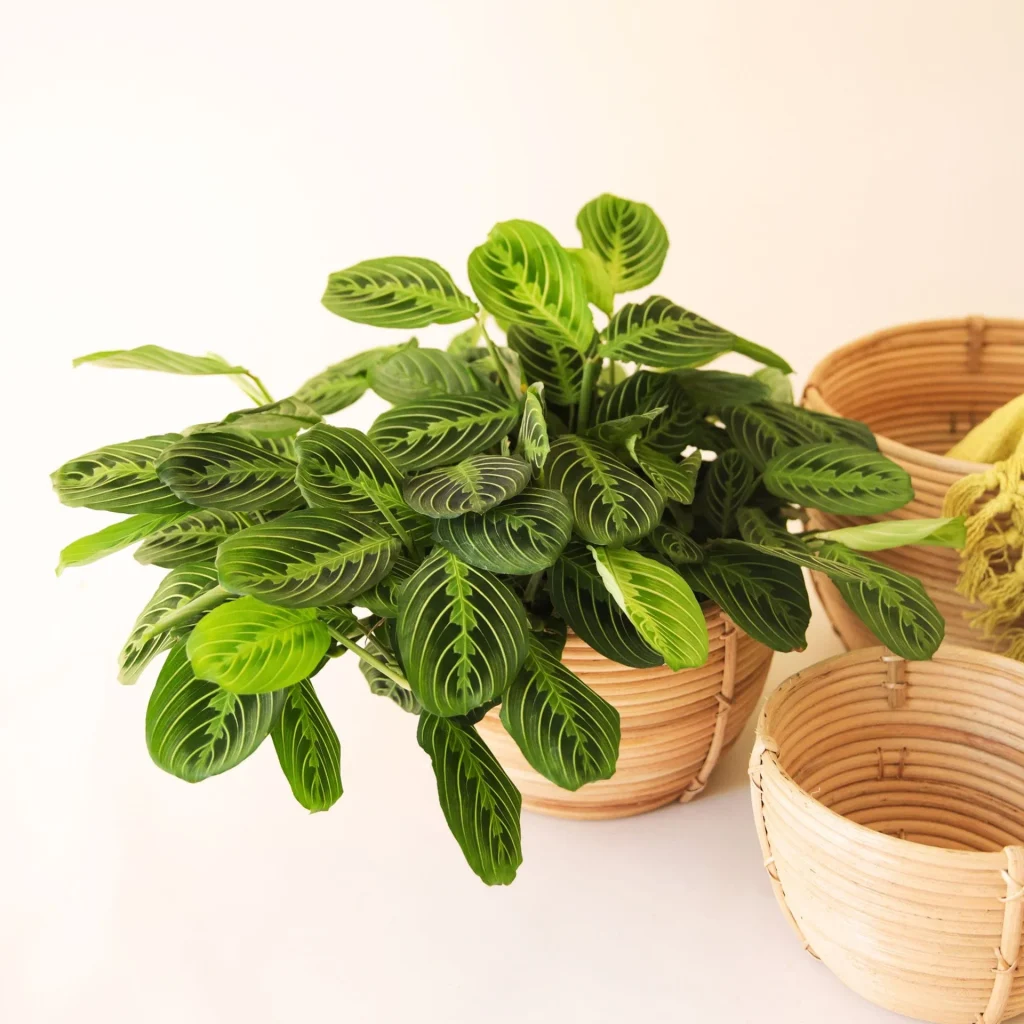
Many plant owners face challenges when caring for their lemon-lime maranta.
Let’s look at common problems and their solutions to keep your plant healthy and thriving.
1. Pests
Spider mites and fungus gnats can sometimes bother lemon lime marantas. These tiny pests can damage leaves and stunt growth.
To deal with spider mites, use neem oil on the leaves. For fungus gnats, let the soil dry out more between waterings. Both pests dislike clean, well-aired spaces, so tidy your plant area.
2. Leaf Discoloration
Yellow leaves often mean too much water or not enough light. Check your watering habits and make sure your plant gets enough bright, indirect light.
If leaves turn yellow, cut back on watering and move the plant to a brighter spot if needed.
Brown leaf tips usually point to low humidity or water issues. The plant may need more moisture in the air.
You can mist around it or use a pebble tray. Also, try using filtered water instead of tap water. This can help avoid the build-up of minerals that cause brown tips.
By watching for these issues and acting quickly, you can keep your lemon-lime maranta looking its best.
Do Lemon Lime Maranta Flower?
While the lemon-lime maranta is mainly grown for its beautiful foliage, it can also produce flowers with proper care. These small and delicate blooms add a subtle charm to the plant.
Don’t worry if you don’t see flowers immediately – they often take time to appear. Just keep up with your regular care routine, and you might be rewarded with these dainty blossoms.
Is Lemon-Lime Maranta Toxic?
You’ll be glad to know that the lemon-lime maranta is non-toxic. This means it’s safe to have around pets and children. However, watching curious pets or little ones who might want to nibble on the leaves is still best.
While not harmful, eating the plant could cause mild stomach upset. With these tips in mind, you can enjoy your lemon-lime maranta to the fullest, knowing it’s both beautiful and safe for your home.
Conclusion
Taking care of a lemon-lime maranta might seem tricky initially, but with these tips, you’re well on your way to success.
Remember, this plant thrives on consistent care and a bit of attention. Keep an eye on its light, water, and humidity needs, and you’ll be rewarded with those striking green leaves that make the maranta so special.
Don’t be afraid to prune or propagate – it’s a great way to keep your plant healthy and grow your collection.
If you encounter any issues, revisit this guide. With a little patience and practice, you’ll soon be a Maranta care pro.
So go ahead, give your lemon-lime maranta some love, and watch it flourish in your home!
Frequently Asked Questions
How to Keep Prayer Plants Bushy?
To keep prayer plants bushy, prune regularly, provide adequate light, maintain proper humidity, fertilize during the growing season, pinch back new growth, and rotate the plant for even growth.
Should You Mist a Prayer Plant?
Misting prayer-plants can help increase humidity, but it’s not essential. A pebble tray or humidifier is more effective for consistent moisture. If you mist, do it in the morning to prevent fungal issues.
Do Prayer Plants Like to Be Root Bound?
Prayer plants don’t like being root-bound. Repot them when roots start circling the pot or growing out of drainage holes.





